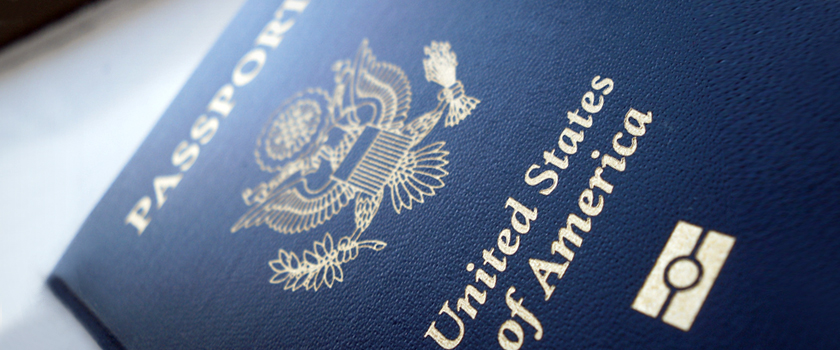2025 Offer Request a Quote Today and Grab a $50 Coupon for Free!
The culture of any country depicts the distinct values and traditions of its people that give them identity. Different cultures interact with each other with the help of language. Language helps the culture to pass on its values and traditions from one generation to another. Moreover, it supports preserving their rich heritage that provides a sense of belongings to the culture.
Japan is a country that is attacked by the atomic bomb in August 1945. It killed 140,000 people and made Hiroshima a city of rubble. The hard work and dedication of the Japanese people helped Japan to appear as a place of prosperity and peace. Do you want to know the fun facts about Japanese culture and language? Let’s find it out.
Japan is the land of the rising sun. It attracts tourists from around the world with its funny and strange things. Apart from its attractive destinations, Japan is also known for its unique culture. Its culture is an amalgamation of both traditional and modern life. This is because Japanese people give importance to their traditional values.
The majority of Japan’s people speak Japanese as their primary language. The Japanese language is from the Japonic language family and it is not mutually intelligible with Korean and Chinese. Although the Japanese language has borrowed many loan words from English, Chinese and other languages.
You will be surprised to know that 49% of Japanese words are taken from Chinese and only 9% of loanwords are taken from English. To understand Japanese culture, you must know the native Japanese language. Native language can provide you with insights into the culture
One of the interesting things about Japanese culture is Sumo. It is the national sport in Japan. This game started in the 8th century with the objective of fertile land for harvesting. It then turned into a common game in which two people compete in a circular ring. The person that knocks the other person from the ring and if the portion of his body laid down on the floor except his feet is a winner. This wrestling is the old tradition of Japanese people that also includes ancient clothing and customs.
Do you know that Japan is the country that has the highest literacy rate among all countries? It is an amazing fact that about 10% of digital users are Japanese. The Japanese language comes fourth after Russian, English, and German. Japanese people give great importance to their culture and language even if they are settled in other countries.
A large number of Japanese people are residing in Brazil, USA France, the UK, and Germany but the interesting thing is that they speak Japanese in their communities to identify them from other communities.
Geisha is the name of traditional Japanese arts. Geisha was an artist that started their performance in major cities in Japan in the 17th century. At that time, they were all male. With time, women became part of Geisha. In 1750, a female appeared as a Geisha at Fukugawa.
That woman performed with dazzling performance and became successful as the first Geisha in Japan. After that many women want to become Geisha. Geisha is a pivotal part of Japanese culture and people love it because of its performance.
No doubt, Japanese is a difficult language to learn but certain facts made it an easier language. In the Japanese language, there is no gender. Therefore, it is less confusing than languages like Spanish and French. Moreover, there is no singular or plural in Japanese.
Additionally, there are no articles and verb conjugation. Also, it is not hard to pronounce because there are only 48 sounds that consist of only 5 vowels and 11 consonants which are much easy to learn.
The national costume of Japan is Kimono. As it is the national costume so people know about its style. But still, not everyone knows how to wear kimonos properly. On the contrary, Kimono is very easy to wear. It is a long dress with a belt that you need to tie and then wear slippers. Kimonos are available in different styles for both formal and informal occasions.
Moreover, its style is also available for married and unmarried people. One important thing to know about Kimono is that Japanese people wore it in different colors at a specific time of the year. To understand which color to wear in which season, you must have an understanding of the Japanese language.
The Japanese language is written in four styles. These styles are Kanji, Romanji, Katakana and Hiragana. Kanji consists of 2000 signs. This writing style came to Japan from China in the 6th century AD. Romanji is a Romanization of Japanese words and it helps in simplifying the original words. Katakana is used in writing foreign words.
Hiragana is a syllabic language and it is the most common form of writing system in Japan. This style of language contains conjugations, particles, and simple words. It is the first writing style that is taught to children in school. Kanji consists of 2000 signs. This writing style came to Japan from China in the 6th century AD.
The Japanese culture is renowned for Manga and Anime. Manga is related to comic books with unique plots and funny concepts. In these comic books, stories are related to the spirits of Fusang and the cultural values of Japan. Anime is part of Manga. The Japanese film industry uses Manga materials in movies.
It makes the character live with sound and movement. Anime is more used than Manga. However, it depends upon the author,s directions. You will be surprised to know that Japanese anime accounted for 60% of the world’s animation in 2016. It has greatly influenced modern Japanese culture.
Japanese is considered one of the fastest spoken languages in the world. According to the latest research, the speed of the language is measured by syllables per second. The Japanese language has left all languages behind because it scored 7.84 syllables per second.
Some European languages like German, French, English, and Spanish are related to each other. But Japanese is a language that is not related to any other language in the world. Japanese is the unique language among all the languages of the world.
It is considered bad manners to walk while you are drinking or eating something in Japan. It shows that you are not giving importance to food and drink. This cultural trait in Japan started in World War II when there was a shortage of food. While using the vending machine for food and drink, the Japanese stand beside it so that they cannot walk with it.
You will find Japanese people full of manners and etiquette. Their politeness is shown in their language. They use specific grammatical forms and vocabulary to give respect to others. It is mandatory to use salutations when speaking with people having different statuses and positions. The things that determine the different positions include job, title, experience, age, and many others.
For ages, Japanese people are taught to become responsible members of their families and to serve others as they serve them. This inculcates passive and obedient attributes in Japanese people making them more polite.
It is very important to respect the different cultures of the world. Some people are very sensitive towards their culture. If they observe anything against their culture, they get offended. Therefore, to get an insight into any culture, you should know their native language. In case you don’t know the native language then you should hire a professional translation agency.

Gaming is the fastest-growing industry that has captured the minds of people around the world. Not just that, the gaming
Read more
As you know that this is the age of science and progress. Tremendous developments are taking place. These progresses are
Read more
A license is a permission granted to a person issued by the legal authorities to allow you to fulfill an
Read more
Passport is basically a document, which allows you to travel another country easily. It is now abundantly used because people
Read more
When someone mentions the languages in the United States, English is the first language that pops up in your mind.
Read more
In the legal premises of educational setup, you are well aware that you need to meet many demands. Living at
Read more
English was viewed as the language utilized by 59% of websites, making it the most conspicuous language on the web
Read more
Key Benefits of Promoting Your Business with the Help of Video Marketing Video marketing is not complex, rather it is very
Read more
If you are adventurous enough, you will love to travel all around the world but travelling all around the world
Read more
Gaming is the fastest-growing industry that has captured the minds of people around the world. Not just that, the gaming
Read more
As you know that this is the age of science and progress. Tremendous developments are taking place. These progresses are
Read more
A license is a permission granted to a person issued by the legal authorities to allow you to fulfill an
Read more
Passport is basically a document, which allows you to travel another country easily. It is now abundantly used because people
Read more
When someone mentions the languages in the United States, English is the first language that pops up in your mind.
Read more
In the legal premises of educational setup, you are well aware that you need to meet many demands. Living at
Read more

